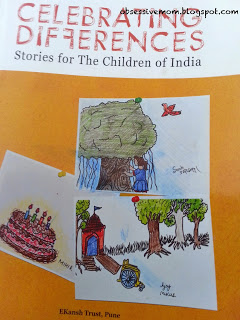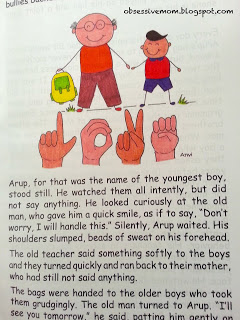When the twins turned toddlers we took our first steps in travelling with them. There was no looking back. Their curiosity and enthusiasm motivated us to step out more frequently as they grew.
The first time they took a dip in the sea at Dapoli, climbed a hill at Hathgadh, wandered through the Bhool Bhulaya of Bara Imambara at Lucknow and went Strawberry picking at Mahabaleswar are all memories we treasure.
At the cusp of their teens, I find travel opening the children’s minds in a hundred ways, making geography and history so much more interesting. They come back bubbling with excitement, talking constantly of all they have seen and I just want hold on to those moments, forever, as do they.
We have photographs, hundreds of them, but they’re more for me than them. Besides, we don’t make physical photo albums like we used to, and that makes them hard to access.
The Travel Bug
…reached out to me recently, to review ‘My Travel Scrapbook’. As I went through its pages I thought it was a wonderful way to keep travel memories alive. I have to admit I have always loved scrapbooking.
My Travel Scrapbook
…is divided into two sections – National Travel (Ten pages) and International Travel (Five pages). I think that’s a fair allocation, though I wouldn’t have much minded doing away with the International pages, for now at least.
There’s a map where children can mark off places they visit. A section asks them to mention the State they’re going to and the cities they visit. While on that, we kicked off a great conversation on Indian states, how they were formed and why they divided (because we had gone to Uttarakhand recently). We didn’t even realise when we had segued off to discussing the Cauvery water dispute. You really never know where the conversation will take you once you begin talking to the children.
A tiny section asks them about favourite local foods they sampled (Petha at Agra, Dal Baati in Rajasthan) that encourages them to try different kinds of food rather than sticking with pizza, noodles and ice cream.

The book also has space for them to record their travel stories. They do accumulate plenty of them from train tales to local legends. Mine wanted to write about a quaint restaurant they’d visited where they discovered a tiny library and the little boy who sang funny poetry at the Agra Fort. Those nuggets are priceless memories to look back upon.
Of course there’s space for photographs and also a box for the children to make and stick their own peel-off stickers. There are some pre-prepared ones plus some blank ones too. I loved the wonderfully glossy pages and the small cheerful boxes. The layout is clear and easy, perfect for the younger tweens. The book makes for a great keepsake, something the children can flip through (as can you) for a bit of nostalgia.
What I loved most
is that this turned out to be a fun, no pressure exercise. It’s a personal account, much like a journal, so there are no benchmarks, no specific way for things to be done, just a rough guideline. That leaves the children free to do it their way. I love that the book helped cut down on their screen time and kept them creatively employed.
What could be better:
Given that this is a scrap-book I would have liked a few more fun stickers (sun, beach, etc) to be picked from, and randomly stuck on to brighten up the pages.
Price: Rs 699
Published by: Curiosity Bug
www.littletravelbug.in
Final Verdict: This one is a keeper for the travelling tween.
Disclaimer: I was given a complementary copy of the The Travel Scrapbook in exchange for an honest review.






